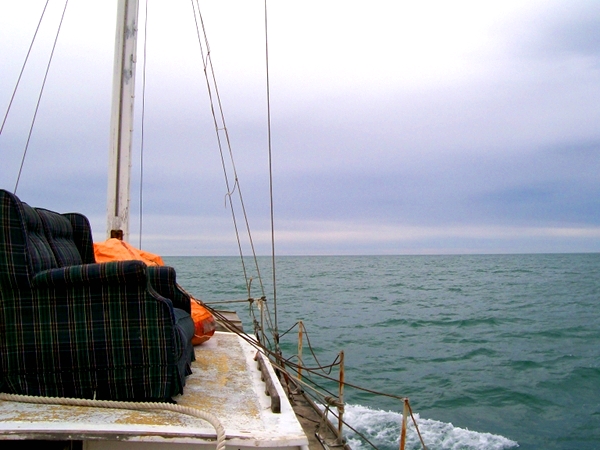When deciding what boat to get; the very first question you need to ask yourself is, where am I going to use it?

From there you evaluate whether or not a type of boat is suitable for the water/weather conditions that it will be exposed to. From there you can then narrow it down to a boat that is suited to living on. Since this site is concerned with nomadic living, we will assume that the boat is not intended to live in a marina, but rather move about on a somewhat regular basis. So we will set out a few basic types of environment that we will be choosing our boat for.
-
Coastal and open ocean
-
Protected inland water way's, estuarial, and river system
-
British narrow canals
Lakes can fit into any one of the above categories depending on size and location, so we won't give them their own category, rather use the above to decide which they fit best.
With the exception of narrow boats, the length shown to be the most successful for fulltime live aboard couples has been up to around 32 feet. While that may seem small to some people, it should be noted that in general, people who have chosen a larger boat have either down sized, or given up living aboard altogether after awhile. The cost for maintenance and equipment increases exponentially as the size increases. And the effort required to use the larger boat, usually means that people just stay put. Which defeats the whole purpose of living on the boat.
Starting with the coastal and open ocean category, seaworthiness and seakindliness is going to be of prime importance when looking at appropriate design. In part this means that it will have a reasonable draft, ie won't float in shallow water. All categories of boat have pro's and con's, in this category you will be giving up shallow water ability, to be able to handle storm conditions safely offshore. No matter how prudent you are, if you spend any amount of time offshore, you will eventually end up in weather conditions you would have preferred not to be in. This combined with the need to carry the weight that comes with all of the supplies and equipment needed for living aboard will generally mean a heavy displacement vessel, usually with a full length keel and wine glass hull.
Some good choices in this category would be designs by Colin Archer and derivatives like the Westsail 32. Tom MacNaughton's Coin Collection series. George Buehler has a range of sail boats and motor troller's that fit in this category. Jay Benford, including his Badger design as built and owned by Pete and Annie Hill. Wylo II, designed by Nick Skeats. The late Phil Bolger designed a large number of boats that are suitable. Hartley with their ferro cement Tahitian range of designs. Laurent Giles, with boats like the Virtue class and Wanderer 3. If you have a look at some examples of these boats, you will start to see a pattern emerge on what to look for.
In the Protected inland water way's, estuarial, and river system category, the need for deep draft can be avoided, though if you are not expecting to be anywhere shallow, then the coastal and open ocean boats will also work. If you are planning on being on rivers and particularly ones with strong currents, you will need a motor boat. In other protected water ways a sharpie would be good due to the shallow draft and a scow type hull would make an excellent live aboard, due to the shallow draft and large accommodations afforded by a given size boat.
Reuel Parker's Scow 33 design is worth a look, as are his sharpie designs. The master of sharpie design was the late Phil Bolger and the A.S. (Advanced Sharpie) designs by Phil Bolger and Friends.
Narrow boats are essentially a class unto themselves. They have a set breadth of 6'10 inches, so they are built by the foot. Unless you get a really old one it will be built out of steel.
Hull Materials: There are pros and cons for all building materials, so none are really better than the other. All require maintenance, with the difference being the type of maintenance. There are two caveats however. Steel and ferro cement are generally considered to heavy for smaller boats, though steel is the material of choice in canals due to it's ability to with stand contact with other vessels and canal walls.
 Nomadic Home
Nomadic Home